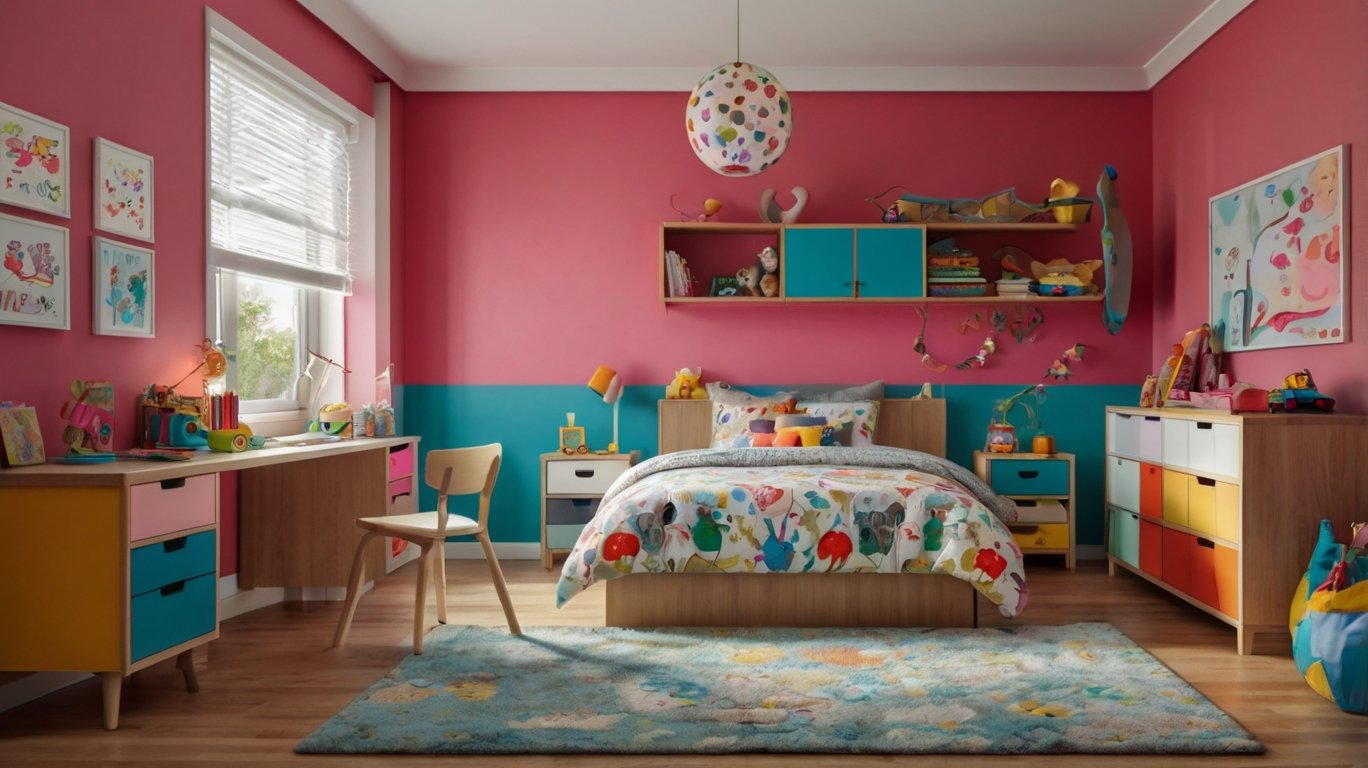How to Create an Organized and Functional Kids’ Room: A Complete Guide
Decorating isn’t just about selecting aesthetically pleasing items—it goes much further than that. Effective decoration makes spaces more functional and optimized. This is especially true for children’s bedrooms, which need well-utilized and organized space, since they’ll inevitably become messy during playtime. That’s why it’s important to approach this environment with practicality in mind. Let’s explore some valuable tips on how to organize your little ones’ bedroom.
Why Is It Important to Organize Your Child’s Room?
An organized children’s room offers numerous benefits for your little ones. Here are some key advantages:
- Sense of responsibility: Children learn accountability by maintaining an organized space, putting everything in its proper place
- Greater tranquility: A well-organized space helps maintain a cleaner environment, creating feelings of comfort, tranquility, and calm
- Routine organization: Maintaining an organized environment helps optimize daily routines, keeping them more focused and productive
- Productivity: Increased organization can maintain higher productivity levels for children
- Comfort: An organized environment helps make it more comfortable and cozy, creating a positive organization experience for children, even if they don’t consciously recognize the connection
- Autonomy: An organized environment helps develop children’s independence—they can choose the toy they want and know exactly where to store it, eventually doing this on their own
Having an organized and functional bedroom brings numerous advantages and benefits to your family. You’ll only find positive outcomes with an organized children’s room!
How to Organize Your Child’s Room?
But how can you organize this space without losing creativity and fun? Check out these selected tips to optimize the environment:
Define Dedicated Spaces
To start, it’s essential to define specific areas within your child’s room. Determine where toys will be stored, where the rest area will be, and where each detail belongs. For this purpose, it’s important to choose functional furniture that helps divide the space. Room dividers, poufs, and other items can be very helpful.
Don’t forget your child’s study area. Reserve a small table with a chair for them to complete school assignments.
Use Storage Boxes and Baskets
We know toys occupy a lot of space in the bedroom and can frequently become disorganized. Transparent storage boxes help maintain an organized and defined space while making it easier for children to find what they’re looking for.
Invest in Closets and Storage Solutions
Closets are indispensable for organizing a child’s room. Organizing clothes, toys, shoes, and school supplies becomes easier with proper storage solutions. To save space, consider wall-mounted cabinets. Shelving units and wall shelves are also excellent alternatives. Custom-built furniture solutions are efficient options for organizing children’s rooms.
Consider Storage Beds
Another tip for those wanting an organized room without visible clutter is to invest in storage beds. This type of furniture can make a significant difference because items can be stored inside the bed without adding another piece of furniture to the room, leaving plenty of free space for children.
Some parents prefer a Montessori-style room, where items are kept at child-level and there isn’t an option for a storage bed. In this case, you can place storage boxes around the room to organize the space. What matters is having defined places to store toys and other items.
Avoid Toy Accumulation
Regularly clean the space, discarding or donating old toys that children no longer use, as well as outgrown clothes and shoes. This helps maintain a cleaner, more organized space while optimizing time when looking for items.
Additionally, this cleaning process helps children learn about solidarity and conscious consumption, which is very important for their development.
Use Colors Strategically
Using colors to organize the environment is an excellent way to make things easier for both children and parents. Choose different colors for different purposes. Color-coding also helps with early childhood education. Vibrant colors, for example, contribute to motor and cognitive development.
Colors can be fundamental in helping define the environment and the activities that should be performed at each moment. The key is to clearly divide the purpose of each space and which color best suits the feeling you want to convey to your child.
Categorize Items
Categorizing items in your child’s room can be a good idea to save time and increase productivity in play areas. After all, you and your little ones will spend less time searching for a particular toy, for example.
When organizing a child’s room, inspiration is fundamental. There are many alternatives for those looking for tips on how to create a functional, beautiful, and fun room. The key is to choose a qualified professional to create a project that meets your demands and needs.

How to Help Children Maintain an Organized Room?
But how do you get children to maintain an organized space? You need to be very careful and attentive when working on organization with children—after all, playing seems much more attractive than organizing, right? Here are some tips:
- Remind children of their responsibilities
- Establish a “play with it, put it away” rule
- Set specific times for cleaning up
- Maintain a consistent routine
- Delegate age-appropriate responsibilities
- Create habits
- Work with rewards
- Make organization fun
- Avoid comparisons
- Recognize their efforts
By following these strategies, you’ll encourage children’s sense of organization and contribute to a significant improvement in their routines, increasing their capacity to develop responsibility.
Planning for Quality and Functionality
When choosing furniture for your child’s room, planning is essential. Opting for quality furniture is indispensable, as safety and comfort for children are paramount. Planning and executing with quality and defined objectives is fundamental to creating a space that grows with your child while maintaining organization and functionality.
